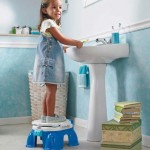Feel the Heat: Choosing the Best Thermometer for Your Child

Rectal Thermometers
Rectal thermometers are recommended for infants and children up to five years old. They are slender with a rounded, bulbous tip and may be either glass or digital models. To take a reading, first reset the thermometer by shaking it until it reads lower than ninety-six degrees. Lightly lubricate the probe with petroleum jelly and gently insert it up to one inch into the child’s rectum, just past the sphincter, without forcing it. The child should lay still for two to three minutes for an accurate reading, and placing a hand gently on their lower back helps calm and reassure them long enough to take their temperature.
Rectal thermometers measure the body’s core temperature, and readings may be up to a full degree higher than oral or ear measurements. This is the most accurate type of thermometer, and even a difference of half a degree can be crucial for an infant’s health. Active children, however, may not be able to use a rectal thermometer because excessive movement can damage the instrument or cause pain and injury. It is best to take a rectal temperature when the child is calm or even asleep.
Oral Thermometers
Oral thermometers are long and slender and may be glass or digital. Glass designs are not recommended for children younger than three years, because biting could fracture the thermometer, and the chemicals used to give a reading – particularly mercury, which is still used in some models – may be toxic. Pacifier designs are useful for younger children but may be less accurate.
To use an oral thermometer, shake it down before each use to reset the gauge; failing to do so is the most common cause of inaccuracy. Oral thermometers are highly accurate if placed properly under the tongue, slightly off center. Digital thermometers either reset automatically or by pressing a button. An oral thermometer should not be used immediately after the child has had anything to eat or drink, because the temperature of the food can influence the reading.
It is important to teach children how to use a thermometer so they can hold it long enough for a good reading. Digital thermometers are faster and indicate when the reading is complete by beeping or buzzing, and they are generally easier to read.
Oral thermometers may not work properly if a child is congested because they cannot breathe through their nose long enough for reliable accuracy. Chatty or fidgety children may be unable to remain still long enough for a proper reading.
Ear Thermometers
Ear (tympanic or aural) thermometers have small, triangular probes that measure the eardrum’s heat. More expensive than rectal or oral designs, they have several advantages. An ear thermometer can record an accurate reading in seconds – a great benefit for an irritable or fidgety child. They can be used while the child sleeps, not in an ear that has been lying on a hot pillow or has been covered by blankets, which may distort the reading. Ear thermometers are also useful for congested children who cannot use an oral thermometer properly.
To use an ear thermometer, be sure the ear is free from excessive wax buildup that could lower the reading. The ear canal is naturally curved, so it is necessary to gently tug on the earlobe to fit the probe snugly in the ear, pointed toward the eardrum. Never force it to fit tightly, particularly with an ear infection that may be very painful. Ear readings will be slightly higher than oral readings.
Ear thermometers are not recommended for children under six months old, because the probe may be too large for an accurate or comfortable fit. If a child has a bad ear infection, an ear thermometer may be too uncomfortable to use. If the child has been lying on a pillow or wearing a long hat, wait fifteen minutes to obtain a more reliable reading.
General Temperature Measurement Guidelines
No matter what type of thermometer is used, body temperature is not one constant number. Temperatures range approximately a full degree throughout the day, with the lower readings in the morning and higher readings after vigorous activity, such as athletic practice or intensive play. Children’s body temperatures fall between 97.7 and 99.1 degrees Fahrenheit (36 and 36.8 degrees Celsius), and most pediatricians generally classify any temperature over 100.4 degrees Fahrenheit (38 degrees Celsius) as a fever.
When taking a child’s temperature, read the instrument’s instructions carefully. Even if probe covers are used, carefully clean the thermometer with warm, soapy water before and after use to avoid spreading germs to other family members. If possible, measure the child’s temperature while he or she is healthy to establish a baseline for comparison, and take multiple readings to be certain of the results when the child is ill. Regardless of the thermometer type, readings should never be taken after a hot bath or physical activity, both of which elevate the child’s temperature and provide misleading results. It is wise to have a backup thermometer available – either a duplicate style or different design – in case the first thermometer malfunctions or provides inconsistent readings. Each thermometer should be carefully labeled to avoid using the wrong type, and always inspect a thermometer carefully before use to detect any cracks, chips, or other potential hazards.
Used correctly, thermometers are necessary tools to monitor every child’s health. By choosing the appropriate instrument for the child’s age, temperament, and illness, parents gather accurate information to help speed recovery and return their children to healthy innocence.




